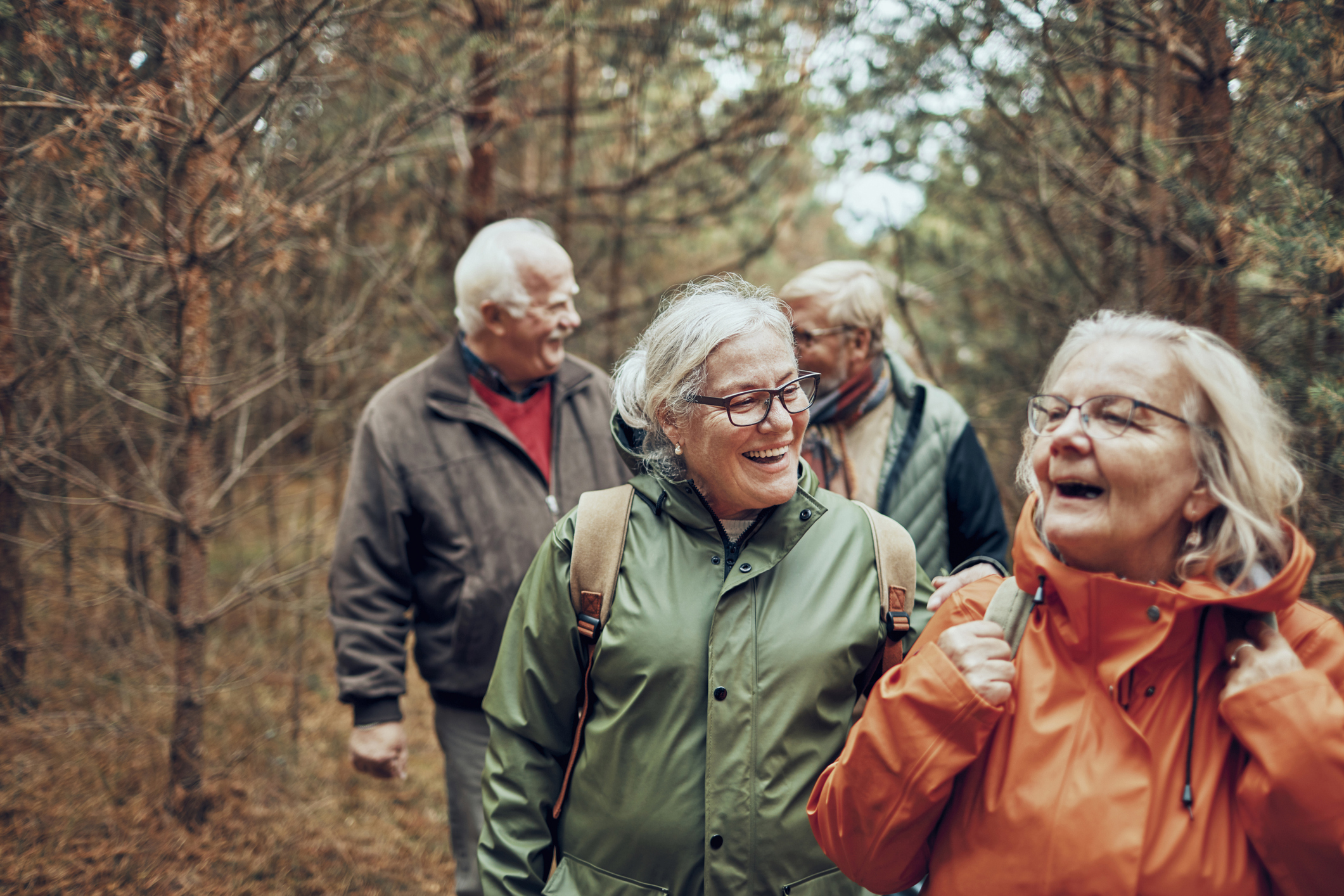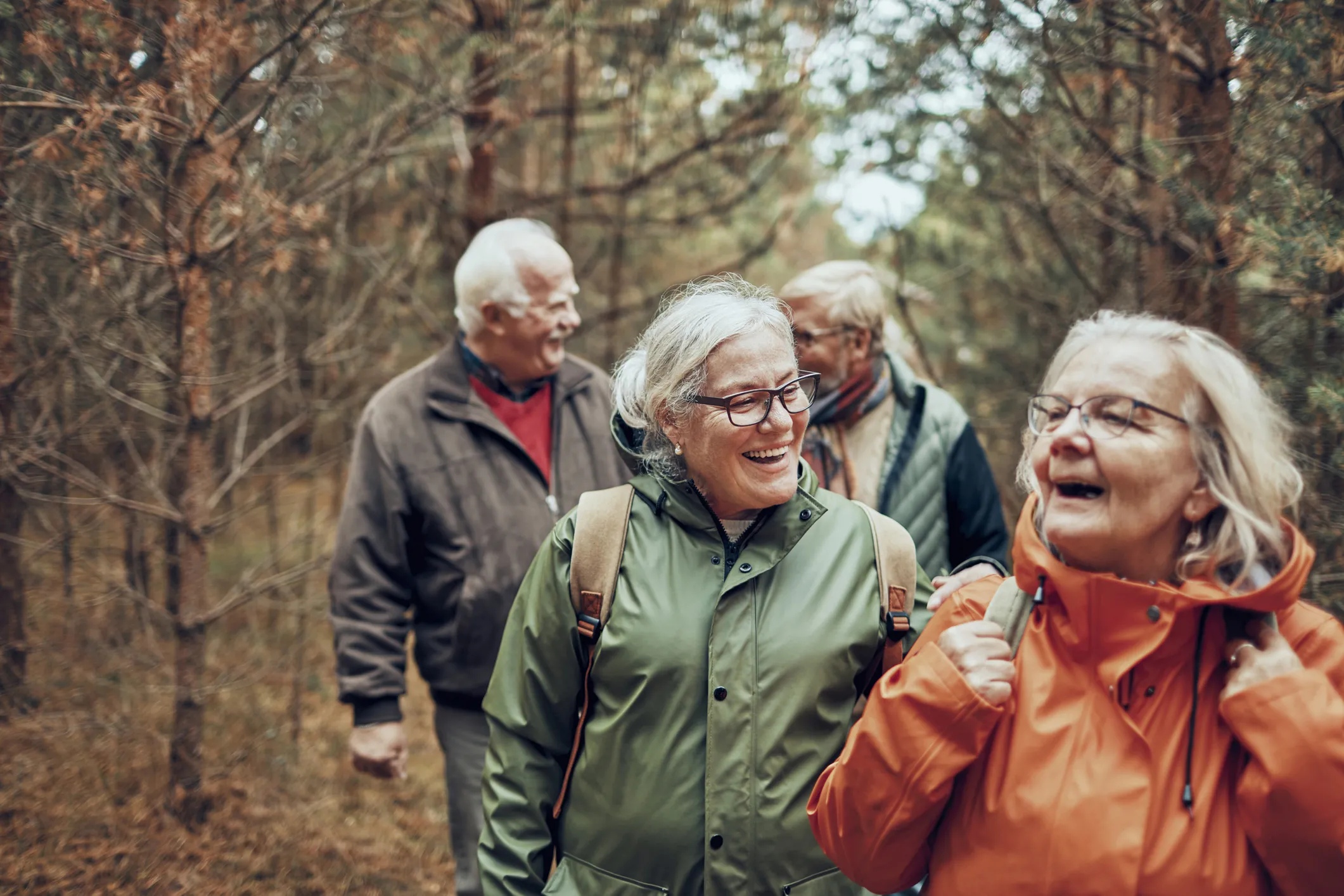Start Exercising at Any Age
It’s never too late to start exercising.
In fact, a recent Swedish study found that no matter your age, gender or fitness level, exercise reduces overall mortality risk.

The study, completed by scientists at the Swedish School of Sport and Health Sciences and presented at a 2019 European Society of Cardiology event, looked at the health records of 316,000 adults over a 10-year period. It compared maximum oxygen uptake (VO2), a number which can indicate how active a person is, with mortality rates and cardiovascular events. Death from all causes dropped by 2.8 percent in those with higher-than-average VO2, the reduction was even more pronounced in the 50 and above age groups.
According to the Centers for Disease Control, regular activity of any amount is important for healthy aging, including disease prevention, delay or management. The organization recommends 150 minutes per week of moderate aerobic activity. This can sound like a lot, but it can be achieved quite easily, even in your own home.
While I recommend a senior-friendly fitness center or personal trainer to ensure you’re exercising correctly, kicking off a home exercise routine is still a great way to get fit and boost your confidence.
According to the Centers for Disease Control, regular activity of any amount is important for healthy aging, including disease prevention, delay or management. The organization recommends 150 minutes per week of moderate aerobic activity. This can sound like a lot, but it can be achieved quite easily, even in your own home.
While I recommend a senior-friendly fitness center or personal trainer to ensure you’re exercising correctly, kicking off a home exercise routine is still a great way to get fit and boost your confidence.
Use a sturdy chair and a seated position for repetitions of:
Chair stands: With a straight back and neck, try to lift yourself out of the chair, with the goal to eventually use only your core and leg strength, and no hands at all. This strengthens your legs and back.
Leg extensions: Sit with your back straight and take turns extending each leg out. This strengthens your thighs.
Seated marching: With the same straight back and neck, march in place while seated. This also strengthens your legs and lower back.
Stand up using a sturdy chair or table for repetitions of:
Standing hamstring curls: Hold onto the sturdy chair keeping your feet and thighs parallel. Slowly lift your heel toward your bottom, strengthening your hamstrings.
Calf raises: Hold onto the chair with your feet parallel. Push up through the balls of your feet until you are on your tiptoes, then repeat for lower leg strengthening.
Use a soup can or small weight, working up to a heavier one, to build arm strength:
Bicep curls: Hold a can in your hand and lift toward shoulder while bending your elbow.
Front raises: Lift your arm to shoulder height while holding elbow straight.
Shoulder shrugs/rolls: Simply shrug your shoulders up and down or roll them forward or backward while keeping your neck and back straight(with or without holding weights).
Use a sturdy, blank wall for:
Wall push ups: For core and arm strengthening, do a standard push up along the wall. Keep your feet and arms shoulder-width apart and stand at arm’s length from the wall. Feet should be a bit further back. With palms flat against the wall and shoulders and neck straight, lower yourself towards the wall and back up again.
Wall sits: Turn around and place your back flat against the wall. Lower your bottom, like you are going to sit in a chair, until you feel a pull through quads (front of thighs). Try to hold for 15 seconds and slowly build up to one minute. Remember to not go too low because you have to push yourself back up to a standing position.
If you have stairs, hold onto a railing for these leg-strengthening exercises:
Stand at the bottom and tap one toe onto the first step, alternating legs. This works on hip flexor strength.
If your joints can handle it, step up and down one step at a time. Again, ensure that there’s a railing or something to hold onto for balance.
If your joints can handle it, step up and down one step at a time. Again, ensure that there’s a railing or something to hold onto for balance.
To work on coordination:
Use your arms or legs to create a pattern, for example raise one arm and opposite leg, then raise the same side arm and leg. This improves balance and coordination.
Walking around your house or neighborhood is also a great way to get started. However you choose to be active, start small and work your way up. Adding any activity is better than sitting still.
Featured Image

Erika Smith is the Fitness Coordinator at The Lifestyle Center. She earned her bachelor’s of science degree in Health Promotion from Lynchburg College and her personal trainer certification through the American Fitness and Aerobics Association.
Sign up for our newsletter
We're committed to your privacy. Chesapeake Regional uses the information you provide to contact you about content. You may unsubscribe from these communications at any time.